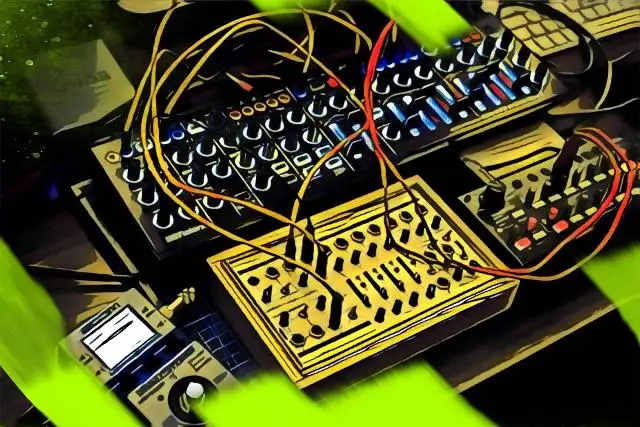Sometimes you just want to step away from the computer and make music. If you're a string quartet, that's easy enough. But if you're an electronic musician, how do you go about processing your MIDI information without the aid of a computer-based DAW?
Enter the MIDI sequencer. They've come a long way since the early days of the Roland MSQ-700 - the very first hardware MIDI sequencer. Since then, there have been improvements in hardware sequencing via workstations and groove boxes and the advent of software-based sequencing, leading to the all-powerful DAWs we use today.
If you're looking for a software-based MIDI sequencer, any DAW will do the job for you . There are even free ones available, albeit with limited use. But for the purposes of this article, we're focusing on hardware that processes MIDI information and can help you create a tune with modular synths, or rock out on stage with your outboard gear.
In terms of hardware sequencers, many characteristics have stayed the same since the early models hit the market. Essentially they're all about focusing on the job of creating music, instead of making pretty patterns on the screen in front of you (or is that just me?).
So, if you're all about hands-on control when you're making music we've got a rundown of the best standalone MIDI sequencers. Sit back and discover more. Just don't shut down your computer till you're done reading.
[Note: all prices are correct at the time of writing, but subject to change]
1. Korg SQ-64
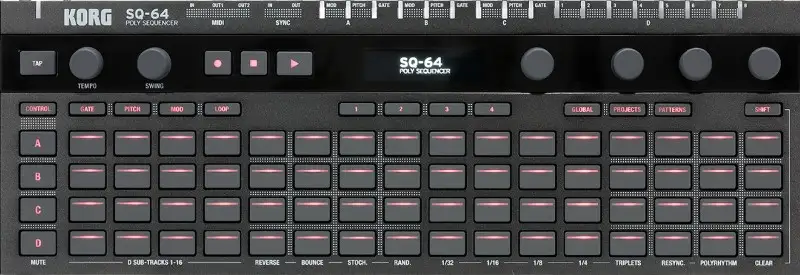
Quick Look:
- 64-step polyphonic sequencer
- MIDI & CV outputs
- Save up to 64 projects, each with up to 16 patterns per track
- Price: $200
No two sequencers are built the same, so we're running down this list in order of cost. First on our list is the very affordable and functional Korg SQ-64.
Built primarily for use with modular synths, the SQ-64 features three CV outputs for modulation, pitch, and gate, that support all common modular voltage standards.
Additionally, there are two MIDI outputs allowing you to connect synths and/or drum machines, plus a MIDI in for external control. The USB-B connection allows the sequencer to be bus-powered, and - if you're feeling wild - connect to your DAW.
For making the actual music, there are three polyphonic melody tracks and one drum track. Each of the melody tracks has 16 patterns of up to 64 steps, and the drum track has 16 sub-tracks with the same number of steps.
A bright and shiny OLED screen shows you what's happening when you turn the encoder knobs, and the 64 LED-backlit pad matrix doubles up as a keyboard. This allows you to record, or edit, your sequences in real-time.
With its vast range of features, the SQ-64 is an affordable piece of kit for the sequencing veteran. But given the price, this is also a great sequencer for newbies - just be prepared for a steep learning curve!
2. Arturia Beatstep Pro
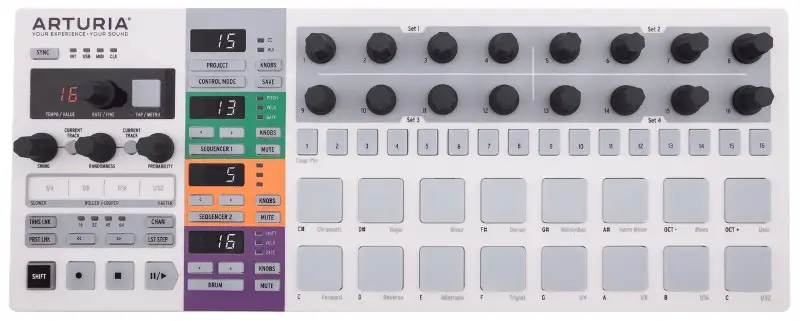
Quick Look:
- Sequencer/controller
- Two melodic (monophonic) step sequencers, 16 track drum sequencer
- 64 steps per pattern/32 sequences per project/16 projects
- 16 backlit pads16 assignable rotary knobs
- 8 drum gate outputs; CV/gate outs
- Price $249 - $349
Is it a sequencer? Is it a controller? It's both!
The Beatstep Pro from Arturia is a beast of a sequencer, offering an array of sequencing capabilities, control options (it'll play nicely with software and act as a DAW controller), and lots of connection potential (two sets of CV controls, eight drum gates, clock, MIDI, and USB).
Rhythm and melodic sequences can be recorded in real-time via the pads, or an external instrument, or recorded in step time. They can then be manipulated using swing, or the built-in randomizer, to add variety to your tracks.
You can connect gear any way you want, using the two sets of CV controls (one pitch, velocity, and gate on each), the eight drum gates, MIDI in, out, and clock.
The Arturia Beatstep will also double up as a good old software controller via the USB-B connection. Use it to control recording software or virtual instruments.
And rest assured, the build quality is excellent, with all pads, knobs, and buttons having a reassuring sturdiness to them.
For the price (which varies from site to site, but is still hella reasonable), you can't get much more flexibility than this when it comes to old-school sequencing and modern control options.
3. Novation Circuit Tracks
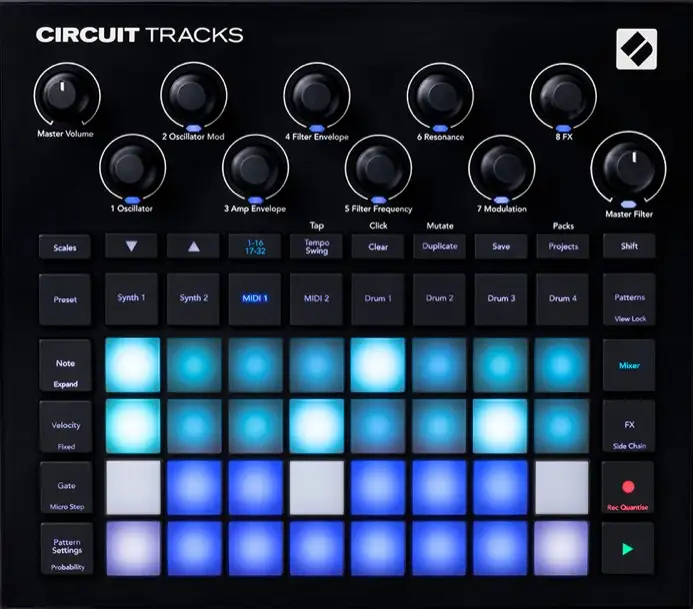
Quick Look:
- Standalone groovebox, with onboard synth engines and FX
- 8 patterns, with 32 steps each
- MicroSD card allows save and recall of patches, samples, and projects
- Load up to 180 seconds of user audio across 64 sample slots
- Price: $400
Next up we have Novation's Circuit Tracks, an all-in-one groovebox primarily aimed at beat production.
The four monophonic drum tracks allow for the creation of intricately layered rhythms, which can be enhanced with the two synth tracks. Each of these offers up to 6 notes of polyphony, leaving plenty of room for rich pads or scorching basslines. Both sets of sequences run from the internal synth engines, but you can also load your own audio onto the unit using the microSD card.
Two MIDI outputs can drive external synths as part of your sequence, and a pair of audio inputs lets you fly external sound into the sequencer's environment, along with the option of processing it using the onboard FX.
The included Components editor software allows you to dive deeper into the sound engines and download artist-made sounds, as well as back up your precious data.
Novations offering may not appeal to hardcore MIDI sequencers who prefer the old-school way of controlling analog synths. But this is a fun and creative tool for musicians who want to bring an inspiring performance to their music.
4. Social Entropy Engine
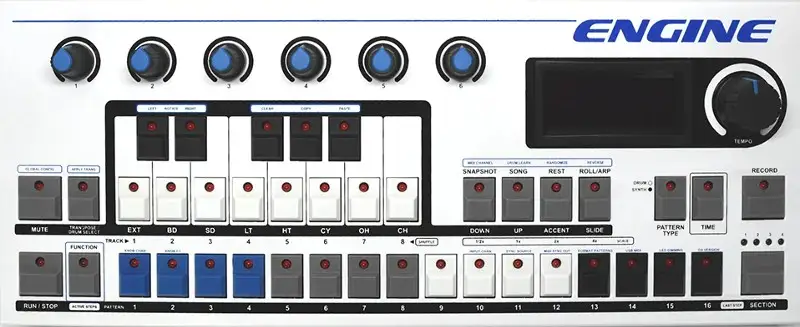
Quick Look:
- 8 polyphonic tracks for melodic and percussion patterns
- 4 banks of 16 patterns on each track
- 6 performance knobs
- USB/MIDI/CV connection options
- Record and change sequences and configurations without stopping the beat
- Price: ~$700
The Engine from Social Entropy is a sequencer for musicians who don't want to get bogged down by menus. The LCD display on the front of the unit only displays tempo, so you're going to have to memorize all the button configurations to get where you're going.
However, it's a solid and versatile piece of gear, and whether you like to work inside or outside of recording software, it could become a workhorse staple of your studio environment.
With options to connect via one of the three 5-pin MIDI ports (2 in, 1 out), USB, or the CV ports, you have a lot of flexibility with how you set up your rig.
Be warned that the CV ports come in the form of an expansion board that can be mounted on the back of the unit, so you'll need to find some more dough if you're planning to control analog instruments this way.
A neat feature on the top panel is a set of buttons laid out in the form of a mini keyboard. These allow you to select tracks, and rhythm instruments, or enter pitches in semitones.
A potential downside of the Engine is that it only seems to be available on the used marketplace. However, it's a cool piece of kit, possibly made cooler by playing hard to get.
5. Polyend Play
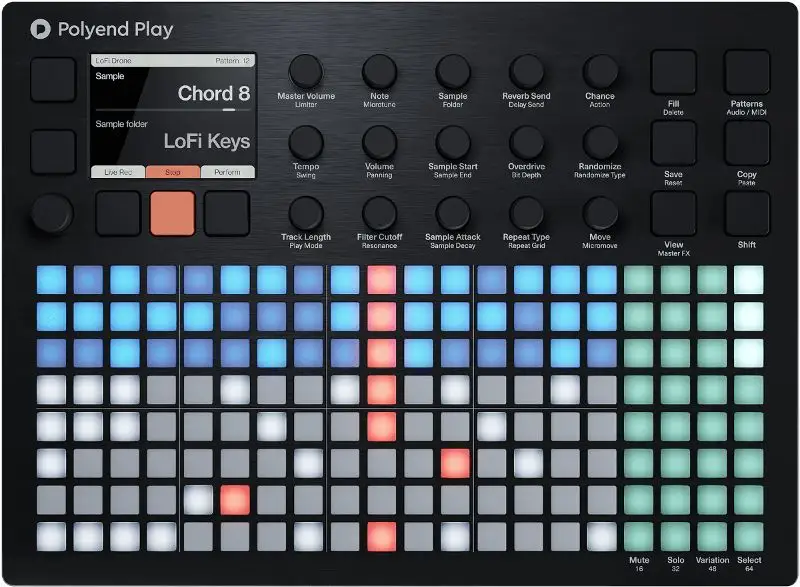
Quick Look:
- Beat production groovebox/workstation
- 16 tracks, 64 steps, 128 patterns
- 128 backlit seqeuncer pads, 32 function pads
- 8 audio tracks, 8 MIDI tracks (8-voice polyphony)
- 15 rotary knobs
- Onboard samples, effects, plus MIDI functionality
- Price: $799
This MIDI sequencer from Polyend is designed to inspire musical musings from the budding producer by offering flexible sequencing and mapping options while keeping the whole process fun. Hence the name.
Unlike some of the other sequencers we've covered, this unit doesn't offer CV outputs. It does host MIDI connections by way of the included MIDI-TRS adapter, allowing the user to connect a piano-style controller for note input, or send out MIDI information to external devices.
Make use of the pre-loaded 3,000 instrument sounds, or fly in your own samples from the microSD card. Polyend rather nicely includes a 16GB card with the unit to get you started and enables the user to save their data easily.
Whether you're using audio or MIDI, or both, this sequencer is geared more towards the performance end of music, whether you're doing it live, or jamming out in the studio. It's pricey(ish), but it is packed with a lot of tools for modern production methods. If you take the time to learn all the features you'll soon take your music to new heights.
6. Elektron Digitakt
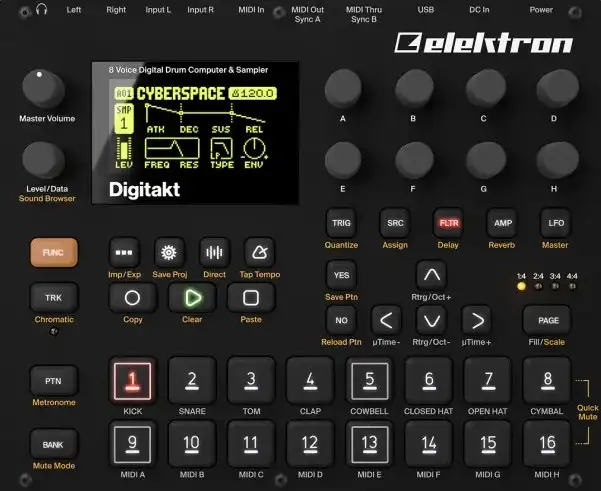
Quick Look:
- Eight-voice drum machine & sequencer
- 8 MIDI tracks; 8 audio tracks, with assignable LFOs
- Sampling capability
- Onboard effects (delay and reverb)
- USB and MIDI connectivity
- Price: $849
Elektron make a lot of great sequencing gear, and we're taking a look at the Digitakt - an eight-voice MIDI sequencer and sampler.
It comes pre-loaded with over 400 factory samples, ranging from noise loops to acoustic kits, so you can begin sequencing right away. The Digitakt also has sampling capabilities if the onboard sounds don't float your boat, although note that this is only in mono.
Each of the 64 steps in each track can contain parameter information, allowing for detailed and expressive sequences. You can also adjust the length of each track, allowing for polyrhythmic madness, or creating music in a time signature other than 4/4.
Two MIDI outs allow you to send sequences to external hardware (although no there's no CV control for modular fans), and Elektron's Overbridge software connects the Digitakt to your DAW.
Song Mode allows you to string together patterns to create compositions, leaving your hands free for other music-making duties.
If you're new to sequencing, be warned that the Digitakt has a bit of a steep learning curve attached to it.
7. Roland MC-707
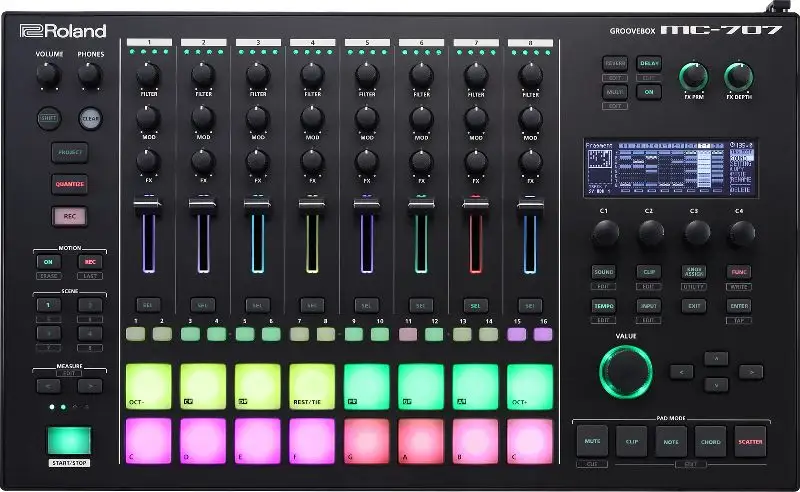
Quick Look:
- Groove Production Center, with 3,000 sounds and 80 drum kits
- Eight tracks (sequencing or audio), 64 steps per track
- Onboard synth engine, sampler, and effects
- MIDI I/O
- 16 performance pads, 8 faders, 32 pots
- Price: $999
If you're looking for a sequencer that encapsulates the foundation of electronic music, you'd be hard pressed to look further than Roland's MC-707. The onboard synth engine on this groove workstation features all the old classics - the TR-808, TR-909, SH-101 among others - but also has a wealth of other synth options at your disposal, as well as editing functions. And of course, you can always use the extensive sampling capabilities to extend your sound palette.
Creating sequences is based on the step sequencer found on classic Roland drum machines of yore. The pads can be used to play rhythmic parts, melodic phrases, or polyphonic chord progressions, thanks to the piano-style layout.
These sequences are stored in clips, and these can be added to Scenes to perform full songs - not quite the same as pattern-chaining, just different.
To put the final polish on things there's a comprehensive set of onboard effects that can be applied to individual parts, or globally. A set of analog send/returns also allows for the use of external processors to beef up your sound.
8. Akai MPC Key 61

Quick Look:
- Keyboard-based sampler & sequencer workstation, with over 6,000 onboard presets
- 8-track audio, 128-track MIDI
- 16 RGB pads, 44 buttons, 4 Q-link knobs
- Full color LED touch-screen display
- Audio interface, with 2 mic/line inputs
- 4 line outs, 8 CV/gate outputs, MIDI in/out/thru
- Price: $1,899
At first glance, you'd be forgiven for thinking the MPC Key 61 was a keyboard controller. In a way, it is. You can certainly hook it up to your favorite recording software and use it as a controller and input.
But what Akai have done with the Key 61 goes far beyond that. They've taken their fabled MPC workflow, and mashed it with a keyboard workstation, resulting in a dynamic controller, keyboard, audio interface, audio and MIDI sequencer, and sampler, all in one.
The MPC sequencing workflow features 128 tracks of internal and external MIDI. Use Key 61's internal instruments, or route the signal to external synths (there are 4 MIDI outs), or modular hardware with the eight configurable CV/gate outs. Record vocals or instruments using the audio capabilities, or take advantage of the built-in MPC sampling.
Other cool features include a SATA slot for adding any size SSD or HDD; a large color touch display, which can be laid flat or propped upright to suit your flow; a sound button for fast preset browsing; and aftertouch on the keybed.
It may not be a traditional sequencer, but the Key 61 could be a great all-in-one solution if you're looking to make inspiring music away from the computer.
9. Akai Pro MPC X
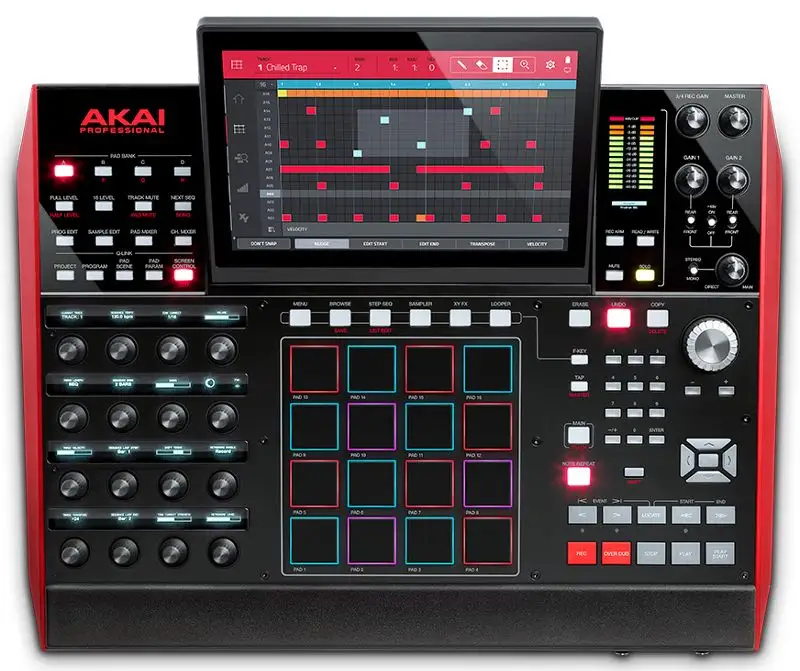
Quick Look:
- Music production workstation
- 16 pads, 16 knobs, 10" touch display
- 128 MIDI/ 8 Audio track sequencer
- Multiple MIDI and CV connectivity
- 10GB pre-installed content
- Price: $2,299
We're ending this rundown with the mother of all sequencers, the Akai Pro MPC X. The ultimate sequencer in a series, which includes the Live and One - check those out if you like the idea of the X, but your wallet doesn't.
With the recent resurgence in the popularity of the MIDI sequencer, the MPC X takes center stage when it comes to controlling analog synths, Eurorack gear, and external MIDI hardware.
Eight MIDI, CV, and line outputs, plus two headphone sockets and three USB ports mean you can send your sequences just about anywhere. Record or sample incoming signals through any of the instrument, combo, TRS, or RCA stereo inputs. You can even hook up an audio interface to record through, if that's your bag. And store your projects on the 16GB storage space, the SD card slot, or expand your data capabilities with the 2.5" SATA bay.
Once you get the hang of the MPC setup and workflow you'll find making music a breeze in with the 128 MIDI/8 audio track sequencer. Use the 10GB of preset sounds, or create your own samples from scratch, and add polish using the onboard effects.
USB connectivity means you can easily take advantage of your computer software. The MPC X comes pre-mapped to Ableton Live for easy integration, whether it's in the studio or on stage.
If you have the cash, and a few days to wrap your head around learning a new workflow, the MPC X is a quality sequencer that will give your productions a more musical feel.
Conclusion
That's our roundup of the best MIDI sequencer for any price range. Given the hardware involved it's always going to be more costly to use a sequencer than rely on a DAW to run things. But sequencing is a fun and creative way to explore new patterns (excuse the pun) in writing music. Go on - ditch the mouse!
Here at e-Mastered we hope you'll find the sequencer to suit your needs. And remember, we'll be here to help put the finishing touches on your sequencer masterpiece!


